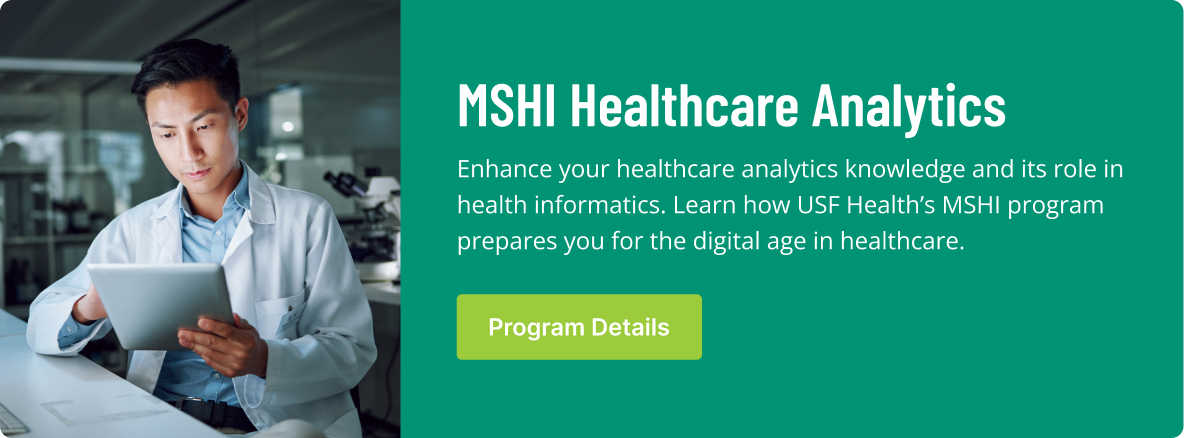As our knowledge of medicine continues to evolve, we can expect the use of analytics to grow with it. The healthcare industry finds itself increasingly depending on data-driven decision-making to improve patient care, optimize operational efficiency and reduce excess expenditures.
The increased dependency on analytics within the healthcare industry is likely to result in a need for well-trained professionals who can deftly handle complex data sets and uncover actionable insights.
One example of this is healthcare inventory management where descriptive, predictive and prescriptive analytics are used to help hospitals, clinics and other organizations deliver quality care to their patients.
What is Analytics?
No matter which industry it’s used in, the general purpose of analytics is the same: to extract insights from data that would otherwise have been overlooked. By making use of statistics, algorithms, data visualization techniques and more, data analytics employs quantitative methods to deliver actionable results to stakeholders
The application of data analytics to healthcare is called healthcare analytics. A systematic approach to investigating diverse healthcare-related datasets to help providers give the best care possible to their patients, healthcare analytics seeks to identify trends, predict future outcomes and generate a plan for how best to design each component of their healthcare infrastructure. Some applications of healthcare analytics may include:
- Evaluating physicians’ performance and correlating it to patient health outcomes.
- Anticipating infection outbreaks and the medication/equipment inventory needed to treat the impacted population.
- Implementing a strategy for obtaining the necessary inventory and maintaining the proper quantity thresholds so that there will always be enough to treat each patient in need.
Like healthcare analytics, healthcare data science also seeks to leverage advanced data processing techniques to glean insights into how a medical organization can optimize its performance. The difference between the two lies mostly in the amount of programming, software proficiency and experience the individual possesses.
Which Types of Analytics Benefit Healthcare Inventory Management Most?
To make the most of the advantages it can bring to the field, healthcare inventory management professionals should first understand different types of analytics. The three most germane to the healthcare inventory management sector are descriptive analytics, predictive analytics and prescriptive analytics. To see the contributions and drawbacks of each, consider a device common to healthcare organizations today as a case study: ADC (automated dispensing cabinets).
Descriptive Analytics
Used to identify current patterns of behavior and collect data on previous events, descriptive analytics tells stories about the condition of an organization. Descriptive analytics may often be used as a starting point to determine areas of opportunity prior to engaging predictive or prescriptive analytics for predictions and problem-solving.
Descriptive analytics is a part of many ADC devices. As they dispense the medications they hold, ADCs automatically keep track of inventory levels, thereby logging current drug consumption. This data can be collected and evaluated over an interval of time to estimate which medications are consumed, how much, how often, and by whom, laying a foundation for deeper analysis.
Predictive Analytics
By collecting and strategically approaching existing data, analysts can begin to make predictions about future trends and events in their organizations. This is considered predictive analytics.
Predictive analytics processes data in a way that can forecast future inventory needs, including potential impact from outside events like supply chain issues or increases in demand.
Prescriptive Analytics
Prescriptive analytics assesses the potential impact of organizational decisions allowing analysts to communicate well-informed recommendations to decision-makers.
In the case of ADCs, systems analyzing inventory data may conduct simulations to discover ways to modify inappropriate medication thresholds or assess reorder times to make sure that all medications arrive before shortages are reached. Stakeholders can then compare potential outcomes and make the best possible decision for the organization and its patients.
Prescriptive analytics uses machine learning, artificial intelligence and advanced algorithms to arrive at its scenarios. This makes the need for additional computation power and a mature cloud data architecture important in comparison to descriptive or prescriptive analytics.
Organizations should be mindful of resources available when implementing prescriptive analytics to derive as much benefit as possible.
Using Analytics in Healthcare Inventory Management
The data collection capabilities of ADCs are only one example of how healthcare analytics can benefit healthcare inventory management. Fewer stockouts, more stable inventory levels and reduced expenditures are a few other beneficial outcomes and organizations can realize them by:
- Using descriptive analytics to identify and prioritize organizational needs.
- Leveraging predictive analytics to determine future medication inventory risks.
- Exploring prescriptive analytics to develop an agile drug inventory program that optimizes efficiency across the board.
Most importantly, healthcare analytics has the potential to improve the quality of patient care. Fewer stockouts mean that patients will have the medications they need when they need them, and the data collection of devices like ADCs can also reduce medication errors, ensuring that patients receive the best care possible.
Earn Your Degree in Healthcare Analytics at USF Health
From the MSHI Healthcare Analytics to the SAS Approved Graduate Certificate in Healthcare Analytics, the USF Health Morsani College of Medicine offers several graduate degree and certificate pathways that can equip students with the skills they need to enter the field of healthcare analytics.
Accredited by the Commission on Accreditation for Health Informatics and Information Management Education (CAHIIM), USF Health’s degree programs meet current industry standards, and the 100% online format provides the flexibility that working students need to continue their education while working and balancing a personal life.
Ready to put your skills to use in the healthcare industry? Apply to one of the graduate programs in healthcare analytics.




